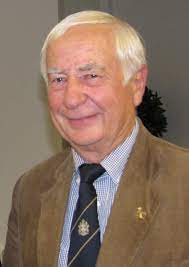PLENTY OF WATER BUT NOT IN THE RIGHT PLACE

Last week we were treated to a comprehensive presentation by our own member Grant McFadden on the development of water management in New Zealand. Grant worked as the MAF’s policy manager for the upper south island. In recent years that involved him heavily in the development of the present Canterbury Water Management Strategy.
Grant’s background was as a farm advisor for 25 years, then 3 years managing the 48 Government owned irrigation schemes, follow by his policy analyst job.
His water management experience came from 8 years on the Waitaki Catchment Commission, 8 years on the North Canterbury Catchment Board and 3 years on the Canterbury Regional Council. He has received a number of awards.
From the 1950’s to 1991 water was the responsibility of Catchment Boards. They had local elected members and some Govt appointees. They operated on a catchment scale and were very effective in soil and water conservation because they knew their districts so well. Many people would return to this “local management system” if they could.
The Boards granted rights to take and discharge water. One Grant was involved in was the CCC application for discharge from the Governors Bay sewerage scheme. Local Maori opposed this, but it was still granted. A similar recent application to discharge into Akaroa harbour was also opposed by Maori and their objections upheld. Things have changed.
In 1988 the Ministry of Works were dissolved and management of NZ Irrigation schemes went to MAF. Grant picked this job up with 6 weeks’ notice to recruit a team of engineers. Treasury were desperate to sell these schemes off because of the contingent liability they considered to exist if there was a dam failure.
Back then a key feature introduced to water management in NZ was the first National Water Conservation Order. This was on the Rakaia River and Grant mentioned the notable work of a present Rotarian, Graham Harrington, who at that time designed and implemented the very first fully interactive mathematical catchment water modelling done in NZ and possibly wider.
In the late 80’s local Government reform and the intro of the Resource Management Act in1991 gave responsibility for water to Regional Councils. Grant spent 3 years on the new Canterbury Regional Council and he said they found it very difficult interpreting the new Act and deciding just what should go into a Regional Policy Statement. A proper Regional water plan did not get underway for another 10 years.
The RMA was operating on a 1st in 1st served basis and this made long term planning a problem. Council had concerns over litigation if they refused access to water that appeared available. During the 1990’s Grant was almost full time involved in managing research contracts dealing with sustainable land and water use. Issues around the efficiency of water distribution and use were investigated and new technology developed.
The economic efficiency of water use was a big area also, since different allocation levels provide differing levels of benefit to the individual and wider region and these become critical in any planned regional policy.
Following the severe 1998 drought people raised questions such as: Could Canterbury ever actually run out of water”? Without a regional water plan looking at potential supply and demand it was difficult for politicians to answer this definitively.
Ministers Sutton (Agriculture) and Hobbs (Environment) wanted some answers and action. Grant discussed the problem with Dr John Bright & Dr George Griffiths and they came up with the idea of calculating supply and demand balances for every catchment and projecting this over 40 years. This provided the base data for proper future water plans. It was called a “Strategic Water Management Plan” and the results from this still operate.
It was clear that in total on an annual basis there was plenty of water but in any one month some districts were short. We were only using around 10-12% of the total annual supply available, i.e. plenty of water, but it was not in the right place at the right time. A new system was needed.
It needed storage, primarily of surplus alpine water and surface & groundwater to be recognised as interchangeable. The problem was not engineering, not economic, and not social. The missing element was a process which would allow all the often competing parties to come together and reach agreement & consensus about how and where water would go.
The Canterbury Mayoral Forum got solidly behind the development of this process. They arranged working party and funding that operated for the next 8 years.
A critical point applied from the beginning was that there must be equal opportunity for water for every interest group. The full range of interest groups took part in working parties throughout Canterbury to see if a level of consensus could be found about storage and distribution. Grant was a member of these groups and they were very successful.
The information learned from these was taken to a large number of public & interest groups meetings. The public made it clear they wanted decision making at a local level and this led to the local Zone Committees that operate throughout Canterbury today where conflicts between environmental, developmental, recreational & cultural interests are sorted out.
So now, since 2010, Canterbury has a comprehensive water plan with long term goals in place and with local people actively sorting out conflicts as they arise.
President Grant thanked Grant for his comprehensive presentation of the development of water management in NZ and his significant involvement in the process.